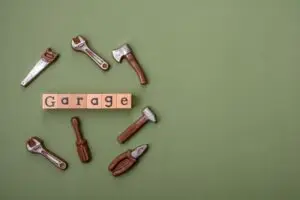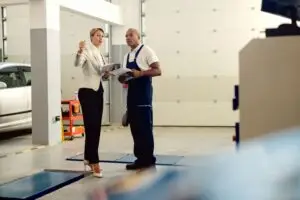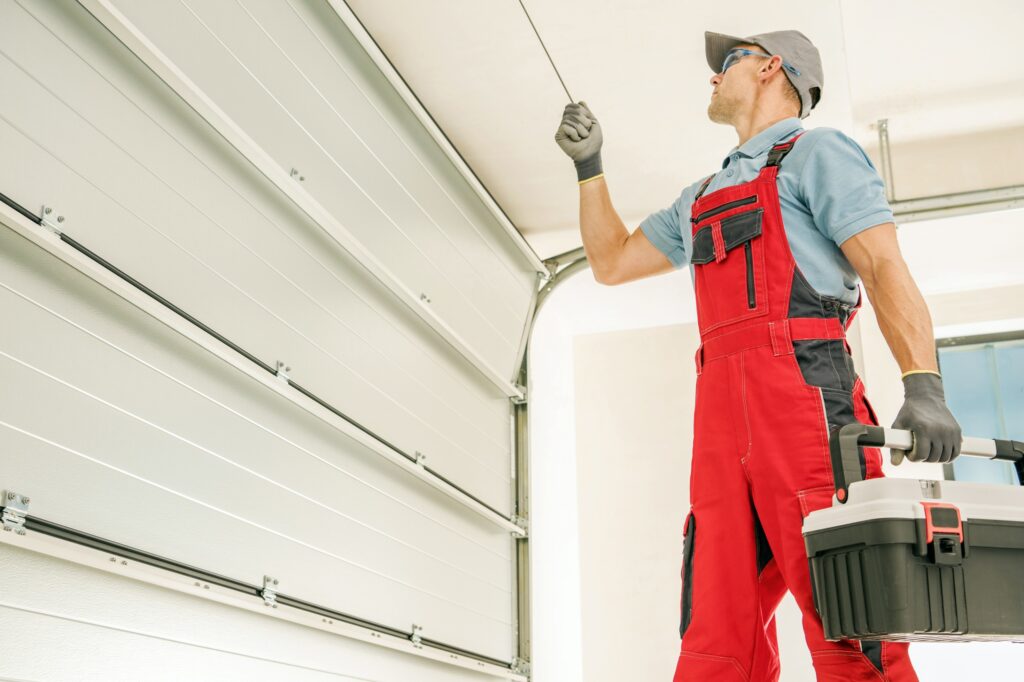Let’s be honest—your garage door springs aren’t exactly the stars of the show… until they fail. Then suddenly, your smooth-gliding door feels like it’s possessed, jammed, or downright dangerous. That’s where garage door spring repair becomes your new best friend.
For Bellaire homeowners juggling daily routines, commutes, and Texas-sized weather swings, keeping your garage door balanced and your springs in top shape is essential, not just for convenience but for safety. Whether your door feels heavier than usual, opens unevenly, or slams shut with attitude, it’s time to run a spring tension test and catch issues before they spiral.
Here at Houston Garage Door Repair, we’ve helped hundreds of folks in Bellaire recognize the early signs of spring fatigue and avoid unexpected breakdowns. So, in true neighborly fashion, we’re breaking down everything you need to know about garage balance issues, how to spot spring wear indicators, and when to call in the pros (hint: it’s sooner than you think).
Why Spring Balance Matters—A Lot
Think of your garage door springs as the muscles of the system. They’re what allow that 150-300 lb. door to lift smoothly with minimal effort. When they’re properly balanced, your door opens and closes like a dream. When they’re not? You get:
- Uneven garage door movement
- A door that’s difficult to open manually
- Loud creaks, groans, or jerks
- Total spring failure if left unchecked
That’s why checking the balance isn’t just optional—it’s part of smart garage spring safety.
Quick Terminology: Torsion vs. Extension Springs
Before we jump into how to test and inspect, let’s talk types. Most Bellaire homes have torsion springs, which are mounted horizontally above the door. These use torque to lift the door.
On the other hand, extension springs stretch vertically along the door tracks. They’re more common in older setups or lightweight doors.
No matter the type, both carry high-tension spring alert levels of force and should be treated with serious caution. (Yep, even if you’re the DIY type.)
The Classic DIY Balance Test (Be Safe!)
Here’s how to check your garage door’s balance like a Bellaire pro—no tools, no sweat.
Step 1: Disconnect the Opener
Pull the emergency release cord (that red handle) to disconnect your opener.
Step 2: Lift the Door Manually
Lift your garage door about halfway and then let go.
Step 3: Observe What Happens
- Stays in place? Congrats—your springs are probably well-balanced.
- Falls or slams shut? Your springs might be losing tension or already fatigued.
- Shoots upward? That’s a sign of over-tensioned springs—and they’re just as risky.
This simple balance testing step tells you a lot about what’s going on behind the scenes.
Common Signs You Need Garage Door Spring Repair
You don’t need to be a technician to recognize when something’s off. Here are the tell-tale broken spring symptoms:
- You hear a loud bang from the garage—like something snapped.
- The opener hums, but the door doesn’t move.
- The top panel of the door bends or flexes when opening.
- One side of the door rises higher than the other.
- The door is extremely heavy when lifted manually.
These are classic aging spring signs that need professional attention ASAP.
Spring Cycle Lifespan: Are Yours Nearing the End?
Springs aren’t forever, unfortunately. Most torsion springs last about 10,000 cycles—that’s a full open/close motion. Depending on your lifestyle, you might hit that number faster than you think.
In Bellaire, where two-car households are the norm and kids love hitting that button for fun (you know they do), some families hit 4–6 cycles per day. That means spring failure could sneak up in just 4–7 years.
That’s why knowing your spring cycle lifespan is just as important as knowing your air filter schedule.
How to Visually Inspect Your Garage Door Springs
While you shouldn’t touch or adjust them yourself, you can do a visual check monthly. Here’s what to look for:
Rust or Corrosion
Humidity or Bellaire’s rainy seasons can do a number on exposed springs.
Gaps in the Spring
If you see any spacing or separation in the coils, it’s time for garage door spring repair—stat.
Sagging or Misshapen Springs
This is especially common in older torsion spring setups. If they don’t look uniform, they’re probably not performing uniformly either.
Frayed Cables Nearby
While not the spring itself, frayed lift cables often point to improper tension or uneven wear.
Spot something sketchy? Don’t DIY it. Springs pack a punch—let a pro take a look before it turns dangerous.
Garage Lifting Resistance: What It Really Means
Ever try lifting your garage door and feel like you’re attempting a CrossFit deadlift? That’s your door’s way of saying: “Hey, something’s off.”
Garage lifting resistance can mean:
- Springs are worn
- Spring tension is uneven
- Your opener is compensating too hard (and might burn out)
A quick spring tension test can reveal whether your springs are the culprit.
When to Call the Pros for Spring Repair
Here’s the deal—garage door springs are under massive tension. Trying to repair or replace them on your own can be dangerous (we’re talking ER-visit level dangerous). So, when should you call in backup?
- Your DIY balance test fails
- You see visual wear or gaps
- Your opener is straining
- The door lifts unevenly or slams
- You hear any loud pop or spring snap
Avoiding Spring Trouble: Simple Preventive Tips
Let’s wrap up with a few Bellaire spring repair tips to stretch out that lifespan and reduce emergency calls:
- Monthly Balance Check – Just like we showed above.
- Listen for Noises – Grinding or squealing means wear.
- Don’t Skip Lubrication – A quick spray on rollers and springs keeps things flowing.
- Limit Manual Force – Yanking the door up or slamming it can damage springs.
- Call a Pro for Adjustments – Don’t risk it. Seriously.
With just a few habits, you can catch early spring wear indicators and avoid pricey surprises.
Get Bellaire’s Most Reliable Spring Repair Pros

If your garage door feels off-balance, heavier than usual, or makes your opener work overtime, don’t ignore it. A minor spring issue today can turn into a full-blown breakdown tomorrow.
Houston Garage Door Repair has served Bellaire families with:
- Same-day garage door spring repair
- Torsion and extension spring replacements
- Full system balance and testing
- Friendly, safety-first techs who get it done right the first time
Don’t wait until your door slams shut—or won’t open at all. Book your spring check today and keep your garage operating smoothly.
FAQ: Bellaire Spring Repair & Balance
Can garage door springs be upgraded to last longer?
Absolutely! Most standard springs are rated for 10,000 cycles, but you can opt for high-cycle springs rated up to 25,000 cycles or more. These are great for households with frequent garage use. Just ask your technician about your options during your next garage door spring repair appointment.
Is it safe to lubricate garage door springs yourself?
Yes—light lubrication with a silicone-based spray is generally safe if you’re only applying to the coils (and not attempting any adjustments). Just avoid overdoing it or using the wrong product. Never try to loosen or tighten spring bolts yourself.
Can a poorly balanced garage door damage an opener?
Yes, it can. If your springs aren’t carrying the load evenly, your opener has to work harder to lift the door, leading to motor strain or even failure over time. This is one of the top reasons we recommend regular spring tension tests and system balance checks.
Next Up: Explore More Garage Know-How
Curious about other smart ways to upgrade your garage, save energy, or prep for storm season? Head over to the Houston Garage Door Repair Blog to check out more guides, tips, and tech insights from our pros.






